
|   |

|   |
Exhaustive buffet - 11th Chinmaya Naada Bindu Festival - Divya Ravi e-mail: thedancingdivyaravi@gmail.com Photos courtesy: CNB February 24, 2021 The Chinmaya Naada Bindu Festival (NBF) organized by the Chinmaya Naada Bindu Gurukula is an annual residential arts extravaganza against the backdrop of the peaceful and picturesque Chinmaya Vibhoothi in Kolwan, Pune. Featuring music and dance performances, art talks, interactive workshops and spiritual discourses, the festival aims to facilitate an improved understanding of the arts while giving the audience an opportunity to connect with the metaphysical and spiritual aspects of the Indian classical art forms. This year, like most other festivals that were forced to go digital, NBF too, extended its reach to a larger audience online. Aired from 10th-16th February, live on Zoom, and thereafter, on-demand on the website, the 11th edition of NBFis a reminiscence of the last ten years, free for all to view upon registration on the website. At the outset, the festival flyers could seem a bit overwhelming, given the all-star cast and extensive number of events including six spiritual discourses, three knowledge sharing talks, three interactive sessions, and seven performance encores, all programmed into one festival (spanning three slots a day, over seven days). Fortunately, the events of NBF will be available to view at one's convenience until the end of February, relieving the pressure to cram it all / fear of missing it all. Enriching expositions Excerpts of Spiritual Talks by Swami Tejomayananda on the topics 'Sri Rama Hare Stotram' (presented in two sessions) and 'Rasa, Rasika and Rasagna' were truly 'Food for the Soul', effectively communicating profound ideas in an unassuming and non-preachy manner. The simple, yet detailed interpretation of phrases like 'Sharanagatavatsala' and 'Nijaroopa Pradarshaka' in the context of Lord Rama, were particularly endearing. Swamiji's explanation of what goes into making a 'Vakya' (word) a 'Kavya' (poem) is a thought provoking pointer for all artistes to note. Insights to inspire The silver lining to the dark pandemic cloud is the massive number of learning opportunities that it has paved the way for. If developing one's craft goes beyond the rigour of artistic training, digital avenues have created so many possibilities to pursue holistic learning, bridging the gap between seekers and scholars. NBF's offering, in this regard, was 'Kala Drishti', a nominally priced 3-day talk series that promised to give viewers a multi-dimensional insight into the arts. Prolific speaker Dushyant Sridhar, in his scholastic talk on 'Navarasa in Ramayana', spoke about what the term 'Rasa' means, its eight types as described by the Natyashastra, and the later addition of a ninth Rasa. He substantiated the description of each Rasa with instances from the Ramayana, reciting Sanskrit verses from Sage Valmiki's and Vedantha Desikar's writings. While a topic titled 'The Yantra Dances' can sound quite esoteric and intimidating, a simple and comprehensible introduction by Ramaa Bharadvaj, Director (Dance) of NBF, set the stage for the next talk. Tracing the origins of the term 'Tantra' to two words 'Tanoti' (to expand the experience) and 'Traayati' (achieving liberation), Ramaa mentioned of mystic traditions that looked at dance as a means of courtship between the soul and the Supreme, involving the Yogic and Tantric principles of the physical, intellectual, emotional, and spatial, as opposed to simply 'an expression of self' or a 'display of virtuosity'. 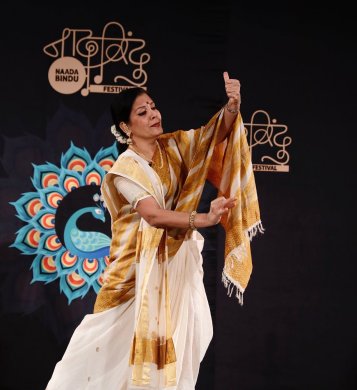 Ramaa Bharadvaj 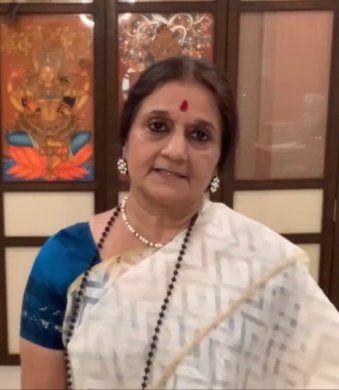 Mandakini Trivedi Mandakini Trivedi was Ramaa's choice of speaker, whose talk elaborated on the ideas of Tantra and Yantra, with appropriate and detailed descriptions, illustrations, and examples. An interesting point worth pondering over is Mandakini's elucidation of how indic art forms are 'Alaukika' or multi-layered, in Form, Content and Experience, which are in turn perceived in Aesthetic, Symbolic and Yogic layers. Art that transcends, as she summarized, is a culmination of all these facets. It was ambiguous whether this series was devised for the lay audience, the connoisseur, or the artiste - given that the former talk dwelled on fundamentals while the latter dived into sophisticated concepts. Repeat! Once more! Encore - what a befitting title for the 11th NBF's Music and Dance showcase, aligning with the format and content of the curation, featuring archival footage of acclaimed performing artistes featured in the last 10 years of the live festival. Albeit a recapitulation, this could very well be called a premiere, considering the performances were never seen before by most, barring those who were physically present at Kolwan when the live festival was on. 'Dance Encore', conceived, curated and presented by Ramaa Bharadvaj in her inimitable style, was much more than a premiere of unseen past videos. The two-day Dance Encore, comprising themed montages, abridged versions of celebrated productions, and exquisite solos and duets, painstakingly themed and knit together through Ramaa's script, insights, video-editing and narrations, could very well be called a production in itself! 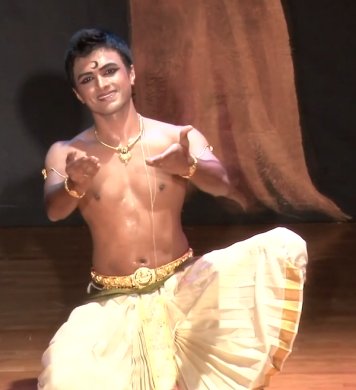 Parshwanath Upadhye 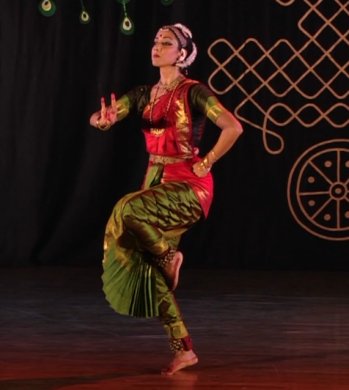 Mythili Prakash On Day 1 of Dance Encore, Ramaa featured a fine assortment, beginning with Parshwanath Upadhye and Punyah Dance Company's invocatory Pushpanjali and an ode to Lord Ganesha. The comfortably paced and detailed delineation of the creation and revival of Lord Ganesha by Parshwanath earns a special place and mention. The next three segments were interestingly strung on the idea of progressing seasons. The beauty of Marathi language lingered on with the popular, poetically delightful Abhang, 'Rusli Radha Rusla Madhav', by Mythili Prakash, where Spring came alive, but with the flora and fauna of Brindavan at loggerheads, mirroring the psyche of the protagonists - Krishna and Radha. Logically proceeding to the monsoon season, next came 'Varsha' a sprightly production of renowned Kathak duo Nirupama Rajendra, performed to exquisite music in Monsoon Ragas composed by Pravin Godkhindi. For this writer, who has keenly watched this work innumerable times through the side wings, viewing it from the front as an audience again brought back waves of memories. Up next was Shankar Kandasamy's heartfelt and soulful rendition of a 16th century poem by Appayya Dikshita and a comic relief Esal Paatu (Tamil equivalent of a Ninda Stuti) by 18th century poet Papavinasha Mudaliar. Although implicit, Shankar's segment interestingly found its place in the 'Seasons' theme, lending itself to cold, chilly winters. 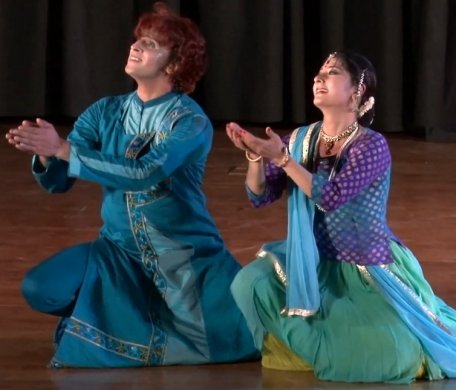 Nirupama Rajendra 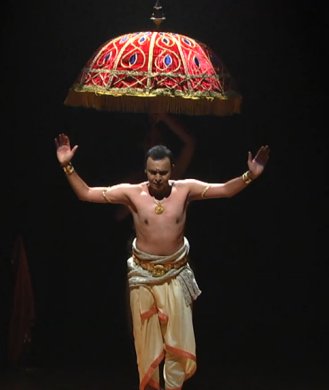 Vaibhav Arekar As described by Ramaa as a moving portrait of India's great hero, 'Srimant Yogi' embodying the principles and ideals of the Karma Yogi Shivaji Maharaj, was remarkable in every sense of the word. Presented by Vaibhav Arekar and Sankhya Dance Company originally as a 90-minute feature, the digital version, abridged to 30 minutes was edited by Ramaa, without compromising the integrity of the work. With intelligent choreographic choices, heart tugging music, enthused collaborative of dancers, and interesting visual perspectives (specifically that of discarding the familiar Aharya of a King and choosing to don a saffron robe beneath the silk robe to show the dualities and dilemmas the protagonist faced), the abridged version of 'Srimant Yogi' transcended the barriers of the digital medium, leaving one teary eyed. Day 2 of Dance Encore began with the magnificent 'Ramayana Montage'. The timeless epic has been told, retold, interpreted, and reinterpreted in various languages by many a poet, and continues to be explored by artistes across all domains. The epic fairly deserved an exclusive segment, given the number of Ramayana-centric performances featured in the past at NBF. Ramaa interestingly stitched together an Odissi solo performance, a Bharatanatyam ensemble production, and a Theatre presentation; her curation aligning with the chronologically occurring Ramayana chapters - Aranya Kaandam, Sundara Kaandam, and Yuddha Kaandam. 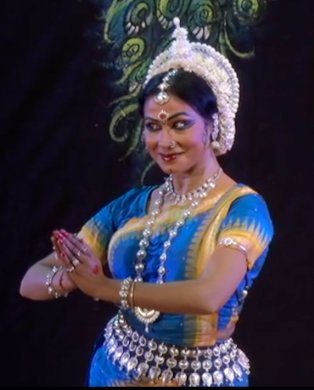 Sujata Mohapatra 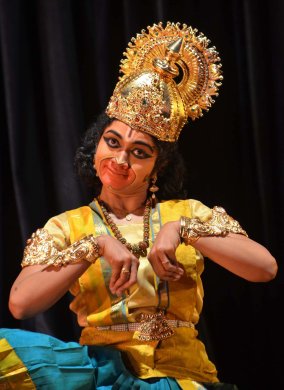 Bharathanjali ensemble Odissi doyenne Sujata Mohapatra, with a live music ensemble, vibrantly portrayed the events in the Aranya Kaandam that lead up to and follow Sita's abduction,switching between characters effortlessly. The depiction of the devout bird Jatayu fighting off the perpetrator was a powerful visual delight. Agile, expressive and technically sound, Bharathanjali Ensemble of renowned Guru Anita Guha brought the Sundara Kaandam to life, and the spoken and the unspoken dialogues between Hanuman and Sita were heart-touching. Acclaimed theatre professional Dr. Gowri Ramnarayan's sensitive and tender articulation of the agony of Mandodari, upon the death of her husband Ravana rounded off the Yuddha Kaandam segment of the Ramayana montage. Three astounding artistic takes at the Ramayana, all different from each other in almost every way, yet woven to seamlessly, hold hands and pave the way for each other. In her reflections, Ramaa enunciated about the various artistic liberties that poets like Tulsidas, Kamban and a certain 'tribal' version of the Ramayana, have taken in their respective versions. The 'Lakshman Rekha' anecdote, Sita being lifted by Ravana along with the earth below her, even the complete omission of a war, are seemingly later additions/editions, differing from actual play of events as per the Adikavya by Valmiki. This beautifully alludes to the pertinent matter of seeing art and artistic choices as 'right' or 'wrong', 'good' or 'bad', when such pluralities in artistic perception have always co-existed. 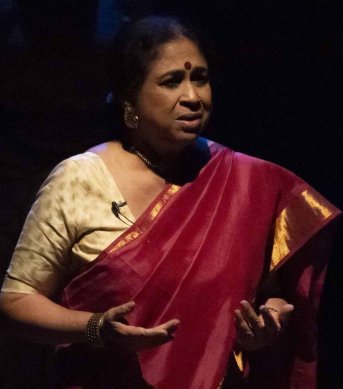 Gowri Ramnarayan 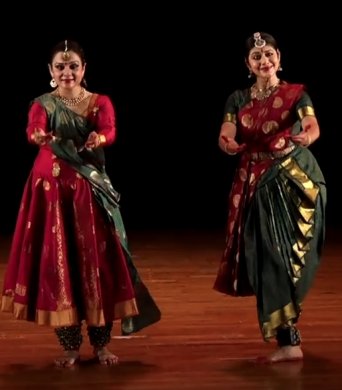 Monisa Nayak & Dakshina Vaidyanathan Baghel Commemorating Pandit Ravishankar's birth centenary, last year, Ramaa envisioned and commissioned a tribute to the Sitar maestro, choreographed by Rama Vaidyanathan and performed as duet by Dakshina Vaidyanathan Baghel (Bharatanatyam) and Monisa Nayak (Kathak). It was exciting to hear about the charming facets of Ravi Shankar's life including the culmination of many North-South Indian aspects and his love for Jazz music (which formed the music track of this commissioned piece). For Mythili Prakash, it was a double encore - she appeared on screen again with 'The Benediction', a piece that transcended form and norm, performed to a Sufi poem rendered by the haunting voice of flautist Mahesh Swamy. Ramaa specifically chose this piece to be featured (both in the live festival and the digital screening), for it aptly aligns with the profound motto of the festival 'Narthantu Paramatman' - 'Through Dance to the Divine'. With the live audience clapping on for the tabla grooves and the Sufi whirls,'The Benediction' was indeed an appropriate finale for the 11th NBF's Dance Encore. It was thoughtful of Ramaa to include a short photo montage of other memorable performances, the awarding of 'Chinmaya Naada Bindu Puraskar' to Anita Ratnam (for Narthaki.com), and to remember Late Dr. Sunil Kothari and Astad Deboo, friends of NBF, whose passing on has left an irreplaceable void in the arts arena. Also available to view are Music Encore (featuring some of the most prominent names in the Indian classical music circuit), Music Meditation Sessions, a Kala Drishti session on Dhrupad Music by Ritwik Sanyak, and Interactive Sessions (Music Quiz, Dance Quiz and Bhajan Antakshari). Although there seem to have been many a glitch with the live airing of the sessions on Zoom, the website and the interface for watching the videos on-demand are user friendly and efficient. It is no mean feat on part of the NBF team to offer on a platter such a meticulously planned, extensive menu with sumptuous delicacies. However, unlike live festivals at physical venues, attention spans and time constraints are drastically different when it comes to watching digital festivals, and there is only so much one can pick up from an exhaustive buffet. To consume, retain and digest so much valuable digital content is a challenge, given the digital fatigue that has crept into our lives, and this could have been considered by the enthused NBF team in the planning phase. 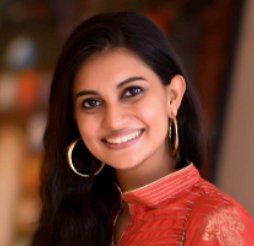 Divya Ravi is a Bharatanatyam artiste with various performances at coveted national and international festivals to her credit. Through her artistic practice, she strives to create and sustain a lucid dialogue between indic ideologies and the modern audience. |